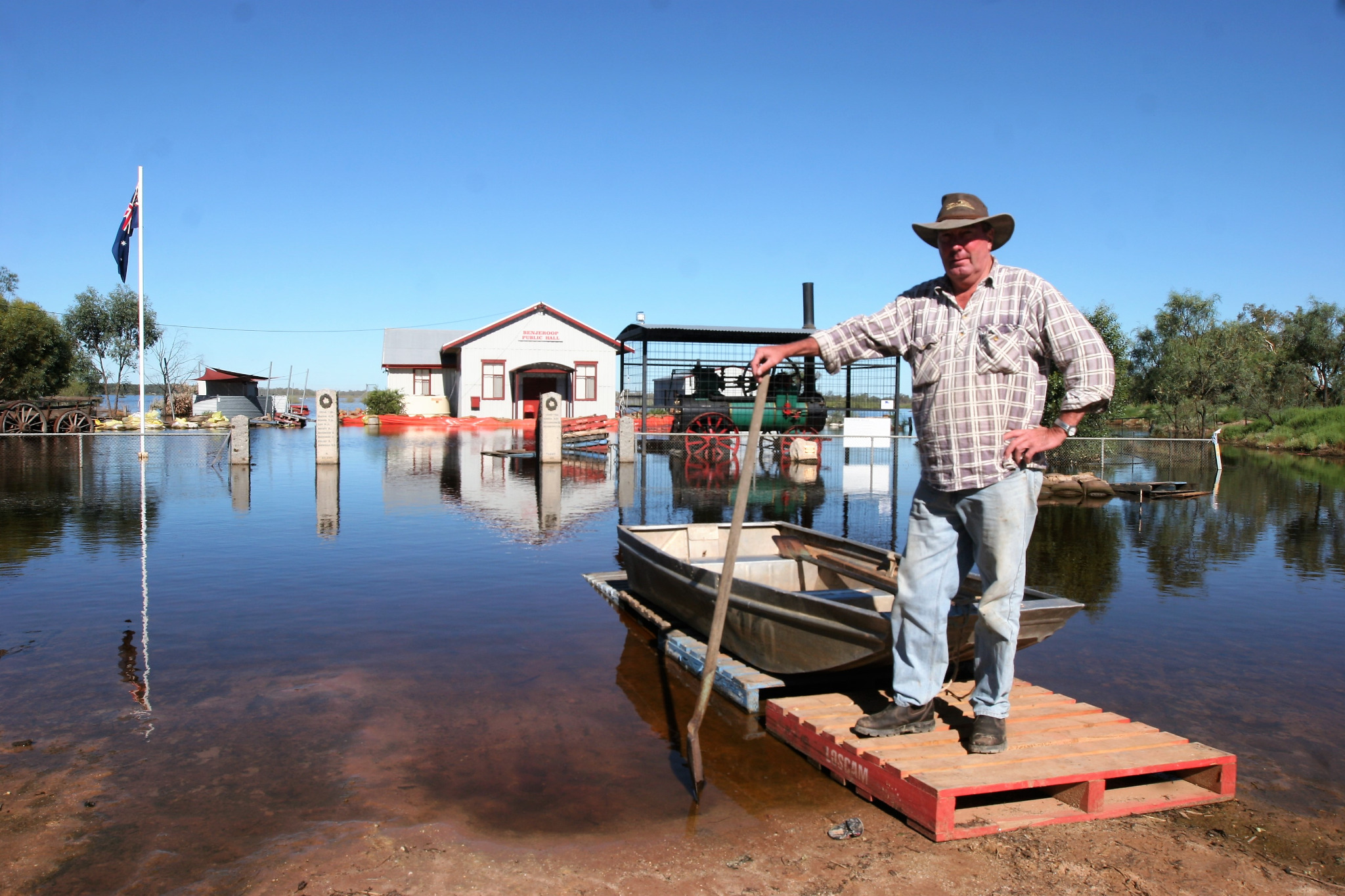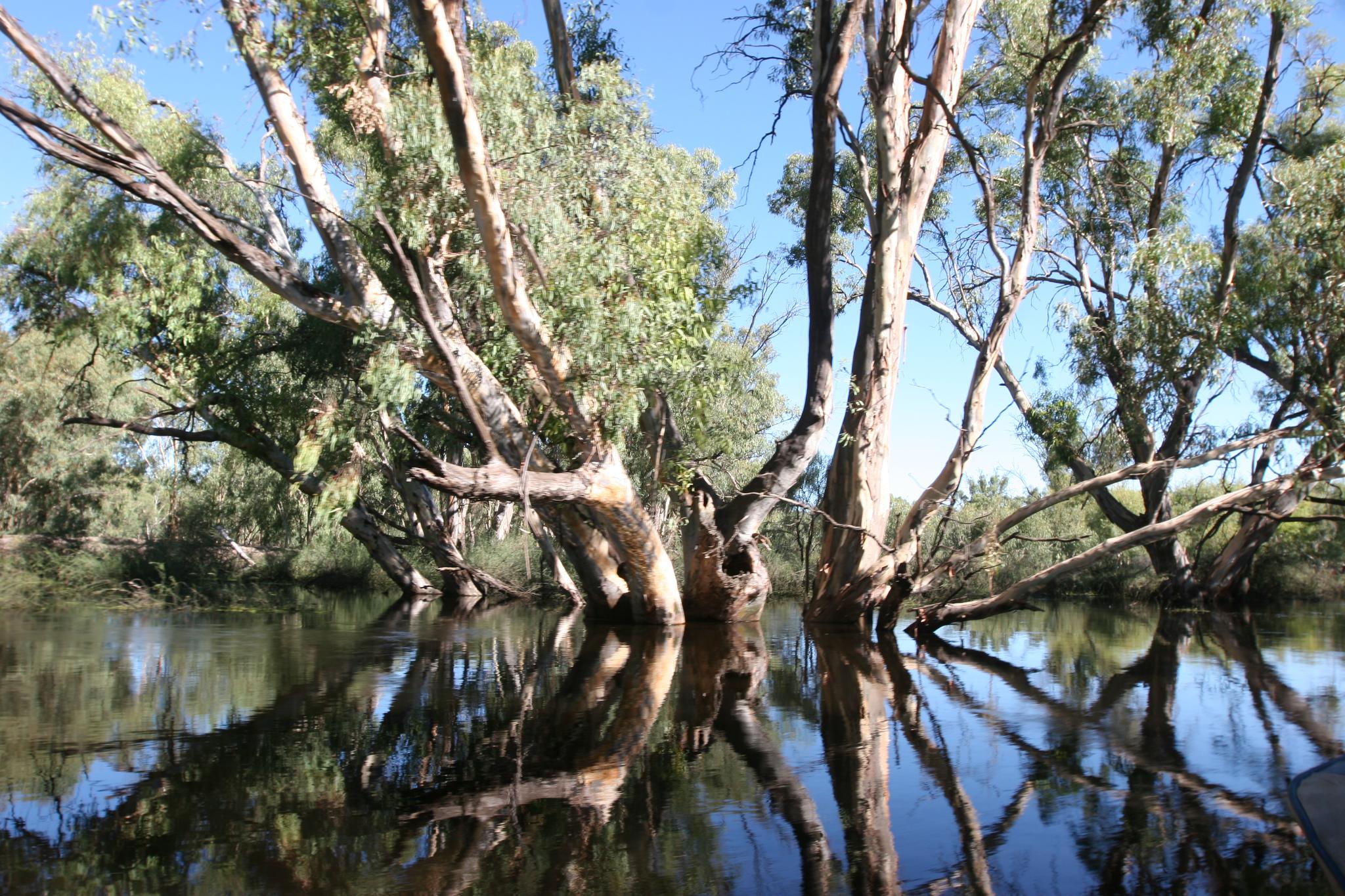The 'black snake' in the grass

Benjeroop resident and flood warden
Lindsay Schultz was among the community members who laboured to save the
Benjeroop Hall. PHOTO: SANDRA GODWIN/The Weekly Times
Communities pick up the pieces as the 'inland sea' creeps towards the Murray River, writes SANDRA GODWIN
THE vast inland sea creeping north towards the Murray River made international headlines last month as authorities battled to save the region's electricity substation and blocked all roads out of Kerang to keep the town dry.
Communities along the Murray River waited stoically for the floodwater from the Campaspe, Loddon and Avoca rivers - all 4500 square kilometres of it - to arrive.
In typically Australian fashion, at Swan Hill it became the Clayton's flood - the flood you have when you're not having a flood - and people half-wished Mother Nature would just get on with it.
Prime Minister Julia Gillard flew over the flooding and described it as "startling" during a brief visit to Swan Hill when her every move was shadowed by journalists.
But the PM and the television news crews moved on as newer, bigger weather catastrophes took centre stage: Cyclone Yasi, torrential rain in Mildura and Melbourne, and Rochester's third flood in four months.
More than three weeks after the Loddon River began lapping at the bottom of the Patchell Bridge at Kerang, there are people still unable to return to pick up the pieces from their flooded homes at Benjeroop, where the river and Barr Creek meet the Murray River.
At least 11 houses in the area, which is between Swan Hill and Kerang, were inundated when rural levees failed.
Longtime Benjeroop resident and flood warden Lindsay Schultz considers himself one of the lucky ones.
Mr Schultz managed to create a 2m bund wall around his house and watched as the floodwater outside it rose to 1.8m.
With his house safe, he and other members of the small community worked tirelessly to save the historic Benjeroop Hall, which houses a treasure trove of the district's history.
While some wondered why they would labour so hard to preserve the hall when there were houses under threat, Mr Schultz said the hall was a source of community pride.
"You could spend a week in there and you still wouldn't have read everything," he said. "All the history of all the pioneers is in there; the maps of the town, where the blacksmith's shop was. If we'd lost the hall the (community) spirit would have dropped."
Cut off by the flooding, it takes Mr Schultz a winding 45-minute journey by boat to get from his house to the hall.
The trip traverses sections of the Murray, Little Murray and Loddon rivers, with water as far as the eye can see on the other side of the rural levee banks that have started to give way in places as the floodwater tries to make its way to what Mr Schultz calls "the big river".
He refers to the floodwater as the "black snake".
"It goes wherever it wants and you just don't know when it's going to turn and bite you on the arse."
A line along the levee banks and the trunks of the mammoth red gum trees that mark the riverbank show the water has dropped up to 30cm since it peaked on January 29.
Some locals relish the peace and quiet after weeks of listening to the frequent drone of light planes and helicopters as authorities, and the media, monitored the movement of the floodwater.
But Mr Schultz wants to hear more noise.
Without help to direct water from the floodplain back into the rivers, he fears all farming in the area will cease.
"I can't see us being out of water here for at least 12 months," he said.
Murrabit dairy farmer Andrew Leahy said he also had been fortunate, with earthworks stopping the water from reaching his house, dairy and 1000 tonnes of hay and silage and preventing the forced evacuation of his herd of 450 cows.
Mr Leahy said 80ha of his farm was still under water.
"When it stops raining and the river drops right down, we might have a fair chance at getting most of the water out," he said.
Gannawarra Shire Mayor Max Fehring said some areas had been inundated for three weeks.
"Some of them have got three or four months of water yet on their properties, which is different to every other flood in the state.
Cr Fehring said responses to the flood effort ranged from "You've done your darn best" to "You've been totally useless and everybody wants shooting". But he said that was to be expected.
"If we only handled our water it would be OK, but everybody else's water has to come through here."
Cr Fehring estimated 50 per cent or more of the community had been affected by flooding with about 100 houses inundated, and up to 25 per cent of the shire remained isolated, under water or unusable.
The council's priority had been to make roads passable for milk tankers, stock feed carriers and school buses.
"A lot of people would say Kerang is not getting the attention it should," he said. "(But) the media moves on at a rapid rate and if the Prime Minister accidentally cut her toe that would become the news, it's just the way it works."

Three weeks after the "black snake" arrived, farms were still inundated, roads cut and people unable to return to their flooded homes. PHOTO: SANDRA GODWIN/The Weekly Times
